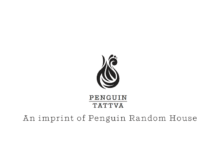
Increasing contributions from the digital segment will help media players register around 8% annual revenue growth to about Rs 60,000 crore by FY-27, according to a Crisil Ratings report of 20 companies.
This will follow the compounded annual growth rate (CAGR) of about 5% over the past five fiscals, reaching around Rs 47,000 crore in fiscal 2024. The revenue growth, along with a focus on rationalizing costs, will expand operating margins by ~500 basis points (bps) to ~18% by fiscal 2027, the report says.
The Crisil Ratings analyzes 20 companies, accounting for about 55% of the media industry’s revenue. The companies in the report operate in broadcast, print, out-of-home (OOH) advertising, radio and television, and those venturing into the digital segment that comprises text, audio, video, interactive media and images on websites, applications and social media platforms.
Media companies have seen a slower annual growth of 5% between fiscals 2019 and 2024 following a shift in consumer preferences to the digital mode. While the increasing number of smartphone users, rising internet penetration, high affordability of data in India (~$0.2 per 1 GB of mobile data) and adoption of 5G fueled this trend, media companies were slow to adapt. However, this is likely to change now, the report said.
Manish Gupta, senior director, Crisil Ratings, says, “To leverage the digital wave better, media companies have begun focusing on digital modes such as over-the-top platforms, social media and mobile apps. As a result, the digital segment will continue to grow its share in the media players’ revenue pie, from nearly 12% in fiscal 2024 (8% in fiscal 2019) to over 18% in fiscal 2027, as consumers increasingly turn to digital modes for consumption of news and other media content.”
Driven by growth in the digital segment, the overall revenue of these players will grow ~8% annually over fiscals 2025-2027. It will be supported by increasing ad revenue in traditional print and publication streams in sync with the growth in domestic retail demand in sectors such as fast-moving consumer goods, automobiles (where new launches take center stage), education services, online shopping and real estate.
All’s not well for the digital segment though. It has been a drag on the profitability of media companies on account of high initial expenditure for manpower, content creation and marketing as companies pushed to identify customers and markets for their products. Plus, competition has limited improvement in margins given that consumers have plenty of free alternatives for content.
Ankit Hakhu, director, Crisil Ratings, says, “Operating performance of the digital segment is now expected to improve. Discovery of the product fits implies that companies have started to identify customer segments most appropriate for their product offerings, thus enabling control over promotional expenses by making it more targeted. Within Crisil Ratings’ study, at least 8 out of 20 companies have achieved or identified this fit to a reasonable extent.”
The proliferation of digital segments also enables advertisers to present consumers with ads that reflect their specific traits, interests, and shopping behavior. With this discovery of consumer taste and preference, targeted ad campaigns through the use of analytics could improve ad revenues for every rupee spent on promotions.
This increasing scale will help in better absorption of fixed costs, with breakeven in operating profitability (from ~20% operating loss in fiscal 2024) in the digital segment expected by fiscal 2027.
Following the break-even in operating profitability in the digital segment and continued increase in revenue from traditional sources, media players are expected to see an improvement in their operating margins by ~500 bps to ~18% by fiscal 2027.
That said, improvement in overall operating profitability also remains sensitive to movement in prices of other key raw materials and input costs for these players such as newsprint prices (NP), which account for 30-40% of overall costs.
Geopolitical or other issues in the global supply chain could lead to unexpected volatility in NP prices, as seen in fiscal 2023, when prices averaged $840 per tonne, up ~23% on-year.

















